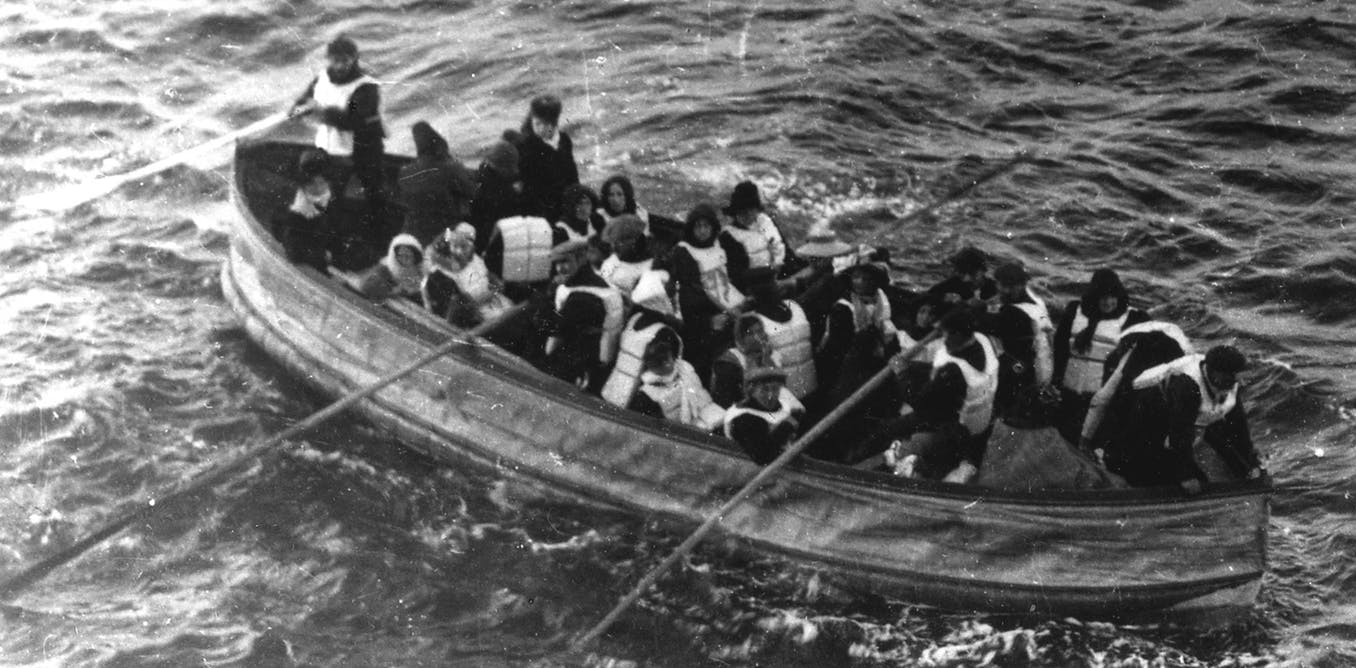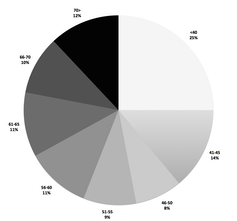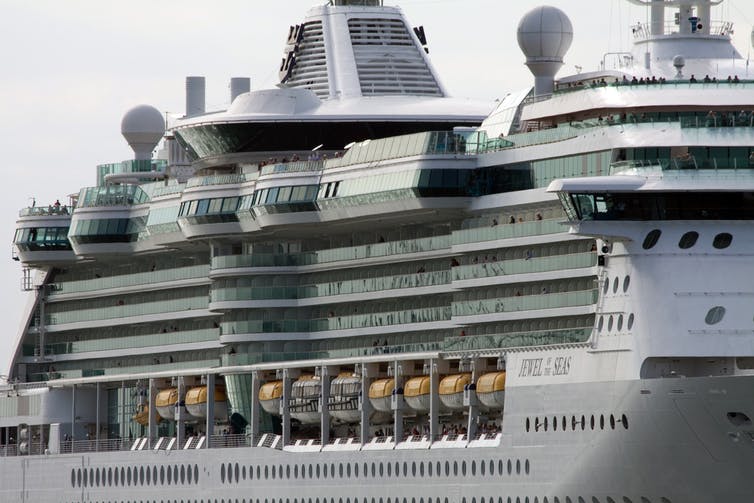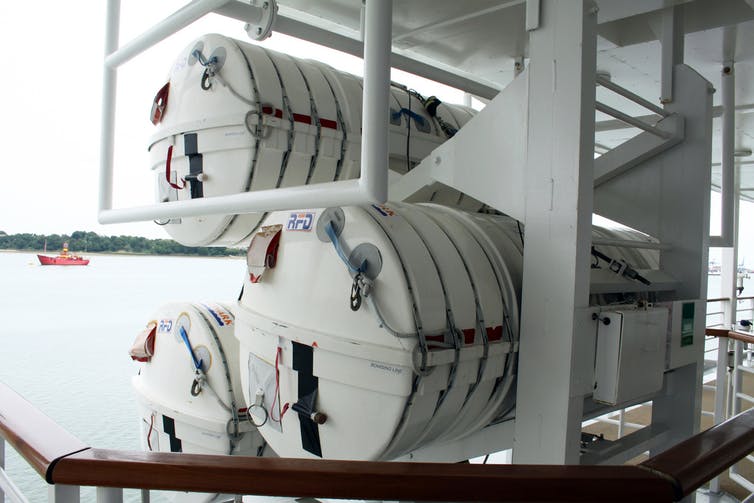Another Titanic change is needed to save more lives at sea

The last lifeboat successfully launched from the RMS Titanic. National Archives
How has our approach to saving lives at sea changed since the tragedy of the RMS Titanic in which 1,523 of the 2,228 people she was carrying died a century ago?
Surprisingly, not much.
Only this April the South Korean ferry Sewol capsized claiming 288 lives so far, many high school students.
Inadequate provision of lifeboats was a key factor in the Titanic disaster in 1912, leading directly to significant changes in the requirements for passenger ships.
Fast forward to 2014 and lifeboats remain central to safety at sea. Yet, it was reported that only two lifeboats were launched before the Sewol capsized and sank. How could this be the case?
Here we go again
The fate of the Sewol has unfortunate yet strong echoes of earlier maritime casualties, from the demise of the Titanic through to the grounding of the Costa Concordia in January 2012.
It seems the fundamental approach to saving lives at sea has changed little. A key element remains that all efforts should be made to keep a stricken ship afloat, and keep passengers and crew aboard such that the ship in effect acts as its own lifeboat.
While efforts to prevent ships from sinking are not to be derided, if nothing else the Titanic experience illustrates the fact that no ship is unsinkable.
Call that ship a lifeboat?
The trouble with the “ship as its own lifeboat” approach is that this attitude tends to lead the crew to order passengers to stay on board and to delay the order to abandon ship until too late. Here the role of the Master, especially in a crisis, is crucial as evacuation can only proceed on his or her order.
The problem here is that once a ship heels significantly from the vertical then launching lifeboats, traditionally accomplished via lines suspended from davits or crane-like lowering devices, becomes extremely hazardous, if not impossible. This was the case for both the Sewol and Costa Concordia.
The only reason no more than 32 lives were lost in the Costa Concordia accident was down to luck – the vessel was grounded which prevented it from fully capsizing, unlike the Sewol ferry.
More eggs in one basket
Traditional approaches to safety of life at sea are likely to face increasingly scrutiny as the trend continues to build ever-bigger cruise liners which resemble nothing less than floating cities.
At the time of writing the largest such vessel is the 360m-long MS Allure of the Seas. It’s roughly the size of four Titanics rolled into one ship and capable of accommodating approximately 6,300 passengers and a crew of almost 2,400 – that’s almost 9,000 people in total.
The cruise industry is also increasingly venturing into relatively uncharted waters with the growth of adventure cruising, notably in polar waters. These waters can be extremely hazardous to navigate because of the presence of ice.

Passenger cruise ships increasingly exploring remote regions such as the Antarctic.
Flickr/Matt S, CC BY-NC-ND
Many of these passengers are also towards the senior end of the age spectrum. The Australian cruise industry association’s latest figures show more than half (53%) of Australian cruise passengers are over 50 years of age, almost a third (31%) aged 61 and over, and one in eight (12%) is over 70.
The potential for large numbers of elderly survivors to a shipping casualty in Polar waters adrift in open, or even covered, boats beyond the ready reach of search and rescue services is nightmarish.

The age of passengers on Australian cruises – more than 50% over the age of 50 (2012 figures).
Cruise Lines International Association (Australasia)
The potential for disaster has been well illustrated over the years by the multiple accidents involving cruise ships in polar waters such as the M/S Explorer in November 2007, which struck an iceberg, capsized and sank.
Happily, other vessels were nearby off Peninsula Antarctica and the 154 passengers and crew were rescued.
But adventure cruising inevitably tends towards remote locations and thus waters where there is often poor to non-existent search and rescue capacity.
The International Maritime Organisation is developing a Polar Code detailing safety measures for ships operating in Polar waters but this is, as yet, not mandatory.
Unfortunately there is no easy way to eliminate the most commonplace contributor to maritime accidents – human error.
Time for a change in approach?
That’s not to suggest that travelling by sea has not become far safer than once it was – it’s just that lifeboats remain a fundamental part of current safety regulations.
The International Convention for the Safety of Life at Sea (SOLAS sets a minimum standard of enough lifeboats to be carried to accommodate at least 75% of those on board (37.5% on each side). Enough liferafts should be provided for the remainder. So far, so good.
But launching lifeboats can be a slow and cumbersome process, as well as one compromised as a result of a vessel listing.

Traditional lifeboats may be difficult to deploy in an accident.
Flickr/International Maritime Organisation, CC BY-NC
An alternative option may be to change the emphasis towards the use of a new generation of large liferafts instead of lifeboats.
Indeed, some modern liferafts can be deployed remarkably swiftly, in 2-3 minutes, and provide for the evacuation of more than 100 people via aviation-style evacuation slides in 15 minutes on a single raft.

Modern liferafts may offer a quicker way to safety off a sinking ship.
Flickr/International Maritime Organisation, CC BY-NC
That said, in the event of any future accident at sea then – whether lifeboats or liferafts are in use – passengers also need to be marshalled on deck rather than being ordered below. With greater numbers of passengers involved, this is likely to be an increasingly challenging proposition.
In the cases of both the Sewol and Costa Concordia passengers were ordered back to their cabins – spaces that swiftly became death-traps.
Rescue efforts on the Sewol ferry have already claimed the lives of two divers involved in trying to recover the bodies trapped inside.
Cutting corners but at what cost?
An underlying and systemic concern here is the significant and continuing pressures on the shipping industry to cut costs and therefore run the risk of compromising safety standards.
The potential consequences of any such corner-cutting can be disastrous. It can lead to minimal and poorly-trained and paid crews, ill-maintained ships and Masters under enormous pressure to minimise costs rather than to ensure safety.
Recent maritime accidents and their tragic consequences have underscored the abiding tension between technology and the frailties of human decision making.
Ultimately, there is no substitute for proper training and regular drills as well as safety regulations that are aligned to today’s shipping and passenger needs and that are then observed and enforced.
This article was co-authored with Dr John Mansell, Principal Maritime Advisor to Maritime New Zealand, and draws on his address on the occasion of the centenary of the loss of the Titanic, delivered April 2012 at the Australian National Centre for Ocean Resources and Security (ANCORS), University of Wollongong.

Clive Schofield receives funding from the Australian Research Council as an ARC Future Fellow (FT100100990).







